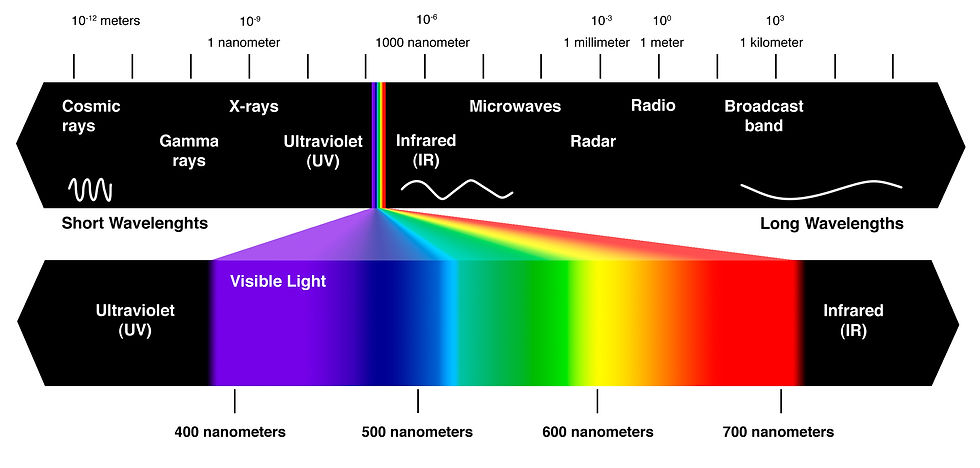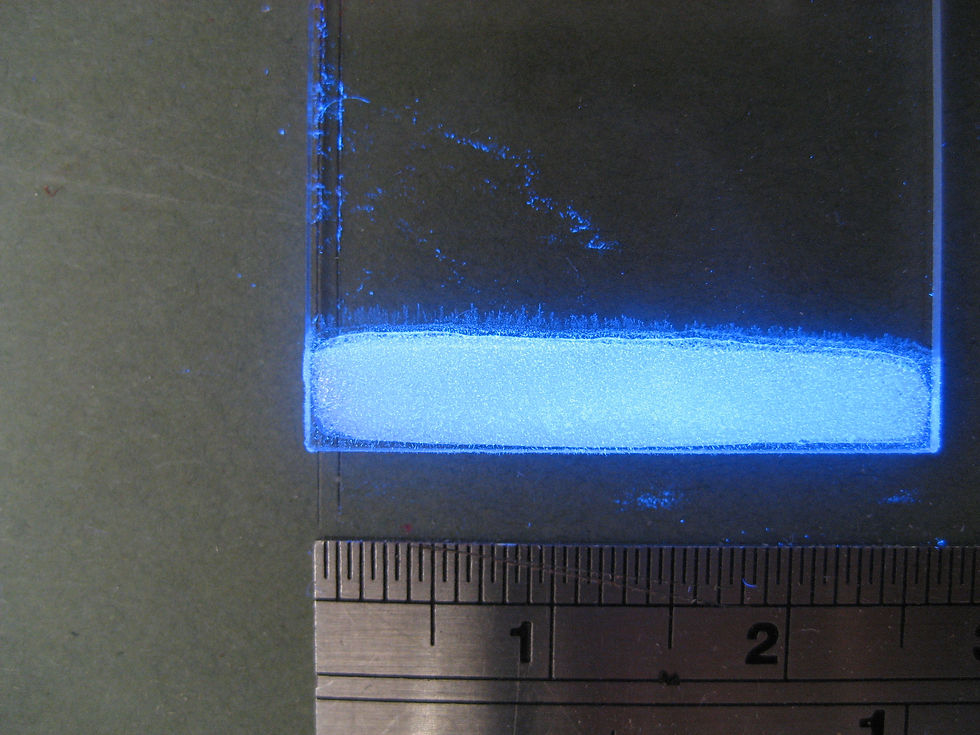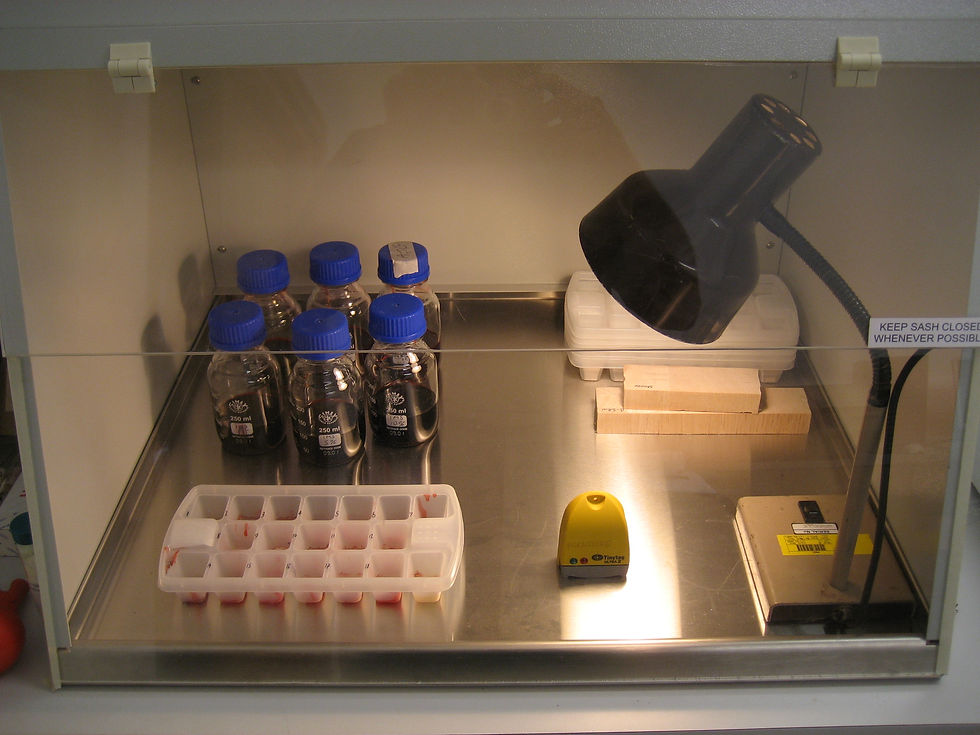

The visible light spectrum

The Ultra Violet Light Spectrum

The visible light spectrum
Special Projects - Analysis of Organic Materials using Ultra-Violet Light
UV Spectroscopy and Materials analysis using UV (A) and UV (B) light
Using different wavelengths of light to illuminate the surface of a material can reveal different characteristics of the material to the naked eye.
We often use what is often thought of as a technique exclusive to museums and galleries in our conservation studios to reveal the true nature of a material.

Uvitex is an optical brightener used in the cloth - dying industry

Uvitex can be used under controlled conditions as a chemical marker

Click the image to read the report

Uvitex is an optical brightener used in the cloth - dying industry
Using UV fluorescing Materials for analysis
Uvitex OB® (optical brightener) is often chosen as a heat resistant, non polar-solvent soluble, chemically stable chemical marker.
Using chemical markers such as this proportions as low as 0.01% it is possible to differentiate materials using UV light.
This process can be tailored to the specific needs of the testing regime.

Tortoiseshell Box viewed under normal light spectrum

Tortoiseshell Box viewed under the Ultra-Violet spectrum

Tortoiseshell Box showing veins and details that prove it is authentic

Tortoiseshell Box viewed under normal light spectrum
Early 20th Century cigar box
This early 20th century tortoise-shell (a colloquialism for Hawksbill turtle shell) cigar box looked under normal light as though it may be "faux" tortoise-shell.
After viewing it under both UV (A) and UV (B) spectrum's it was possible to see the structure of the material, including veins and other details that showed it to be authentic.
This process revealed important evidence without causing damage to the delicate parts of the historic surface.
